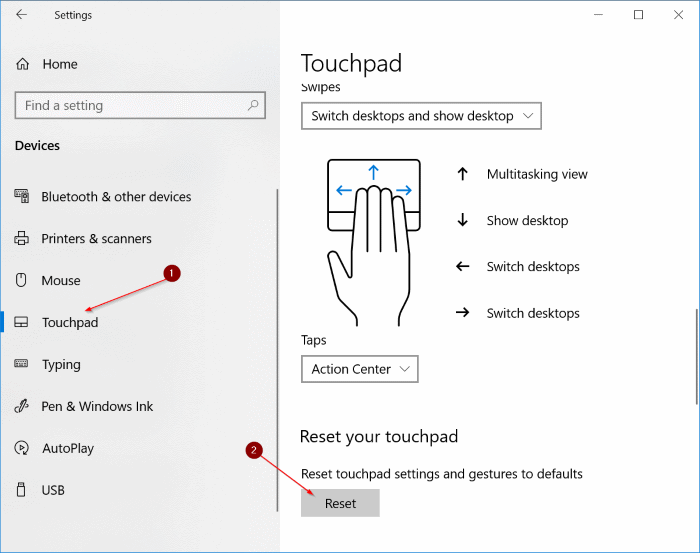Navigating through the functionalities of a laptop, the touchpad stands as a crucial input device. Understanding how to disable it is equally significant. Let’s explore the intricacies of managing this feature efficiently on Windows 10 machines.
What is a touchpad?
The touchpad, often termed the trackpad, serves as a built-in pointing device, allowing users to control the cursor without a mouse. It’s an integral component for many, yet its involuntary activation can disrupt workflows.
Importance of Disabling the Touchpad
Disabling the touchpad prevents accidental clicks or cursor movements while typing, offering a seamless computing experience. It grants enhanced control, especially when using an external mouse.
Understanding Touchpad Settings

Accessing touchpad settings
Within the Windows settings or Control Panel, one can access the touchpad settings to tailor its behavior according to personal preferences.
Customizing touchpad settings
Users can adjust sensitivity, gestures, scrolling behavior, and other features through the touchpad settings.
Identifying touchpad drivers
Understanding the touchpad drivers and their versions can help in proper configuration and troubleshooting.
Disabling Touchpad via Settings

Using Windows settings
Within the Windows settings, users can navigate to the touchpad section and deactivate the touchpad.
“Using Windows settings” refers to accessing and modifying various system configurations, including touchpad settings, through the Windows operating system’s built-in options.
This involves navigating through specific menus and options provided by Windows to customize and manage the settings related to the touchpad functionality on your laptop.
Navigating through control panel
Accessing the control panel allows more detailed modifications to the touchpad settings.
“Navigating through control panel” means moving through the Control Panel interface in the Windows operating system.
This involves accessing and exploring the settings and options available within the Control Panel to make changes or adjustments, including those related to the touchpad functionality on your laptop.
Modifying touchpad settings
Making specific changes like disabling tap-to-click or adjusting sensitivity can effectively reduce unwanted touchpad activities.
“Modifying touchpad settings” refers to making changes or adjustments to the various configurations and options related to the touchpad on your laptop.
This includes altering settings such as sensitivity, gestures, scrolling behavior, and other features available in the touchpad settings menu to suit your preferences and needs.
Disabling Touchpad via Device Manager

Accessing Device Manager
Navigating through the Device Manager, users can find and manipulate the touchpad driver.
“Accessing Device Manager” involves opening the Device Manager utility on a Windows computer. This tool allows users to view and manage the hardware devices installed on their system, including the touchpad. Through Device Manager, one can locate and make changes to device drivers, including disabling the touchpad driver if needed.
Locating the touchpad driver
Identifying the precise driver enables users to disable it directly.
“Locating the touchpad driver” involves finding and identifying the specific driver associated with the touchpad within the Device Manager. Once located, users can interact with this driver, such as updating, disabling, or enabling it as necessary for touchpad management on their laptop.
Disabling the touchpad driver
Temporarily disabling the touchpad driver prevents its functionality until re-enabled.
“Disabling the touchpad driver” refers to the action of deactivating or turning off the specific driver associated with the touchpad through the Device Manager in Windows. This action prevents the driver from functioning, effectively disabling the touchpad functionality on the laptop until the driver is re-enabled.
Utilizing Third-Party Software

Exploring third-party applications
Several third-party tools offer easy management of touchpad functionalities.
“Exploring third-party applications” involves investigating and considering software or applications developed by external sources or parties other than the manufacturer of your laptop.
These applications are designed to offer alternative ways to manage or control the touchpad functionality on your Windows laptop beyond the built-in settings or options provided by the operating system.
Installing and configuring software to disable touchpad
Installation and setup of these applications provide alternative ways to disable the touchpad effectively.
“Installing and configuring software to disable the touchpad” refers to the process of downloading, setting up, and adjusting specific applications or programs designed to manage the touchpad functionality on your laptop.
This involves installing the software and adjusting its settings to effectively disable the touchpad as per your preferences or needs.
Benefits of Disabling the Touchpad
Enhanced usability
Disabling the touchpad enhances usability, particularly for users comfortable with external mice.
Avoiding accidental input
Eliminating accidental touches on the touchpad reduces interruptions during tasks.
Troubleshooting Common Issues
Re-enabling touchpad after disabling
In case of inadvertent disabling, methods to re-enable the touchpad are available.
Issues encountered during the process
Some users might face challenges or errors while attempting to disable the touchpad.
Alternative methods for disabling touchpad
Apart from the conventional approaches, there are alternative methods worth exploring.
FAQs
How to re-enable the touchpad?
Re-enabling the touchpad can be done through the same settings used for disabling it. Navigate to the touchpad settings in Windows or the Control Panel, find the option to enable the touchpad, and click or tap on it to activate the touchpad again.
Can disabling affect external mouse functionality?
Disabling the touchpad typically doesn’t affect the functionality of an external mouse. Once the touchpad is disabled, the external mouse should function normally without any interference.
Will disabling the touchpad impact keyboard shortcuts?
Disabling the touchpad won’t impact keyboard shortcuts directly. Keyboard shortcuts usually remain unaffected by the touchpad’s status. However, some laptops might have specific touchpad-related keyboard shortcuts that won’t work when the touchpad is disabled.
Is it reversible if issues arise?
Yes, disabling the touchpad is reversible. If you encounter any issues or find that disabling the touchpad doesn’t suit your needs, you can easily re-enable it using the same settings or device manager as mentioned earlier.
Can third-party software cause system instability?
While many third-party software options exist to manage touchpad functionalities, not all of them cause system instability. However, some poorly coded or incompatible software might potentially lead to system issues. It’s advisable to choose reputable software and ensure compatibility before installation.
Should I update drivers after re-enabling?
It’s not mandatory to update drivers immediately after re-enabling the touchpad unless you experienced driver-related issues prior to disabling it. However, periodically updating drivers is a good practice to ensure optimal performance and compatibility with the latest software updates.
Conclusion
In summary, mastering the art of disabling the touchpad empowers users with control over their computing experience. It’s a fundamental skill that enhances productivity and ensures a seamless workflow.


![How To Disable Touchpad On Windows 10 [Any Laptop]](https://technoajeet.net/wp-content/uploads/2023/11/hqdefault-3.jpg)






